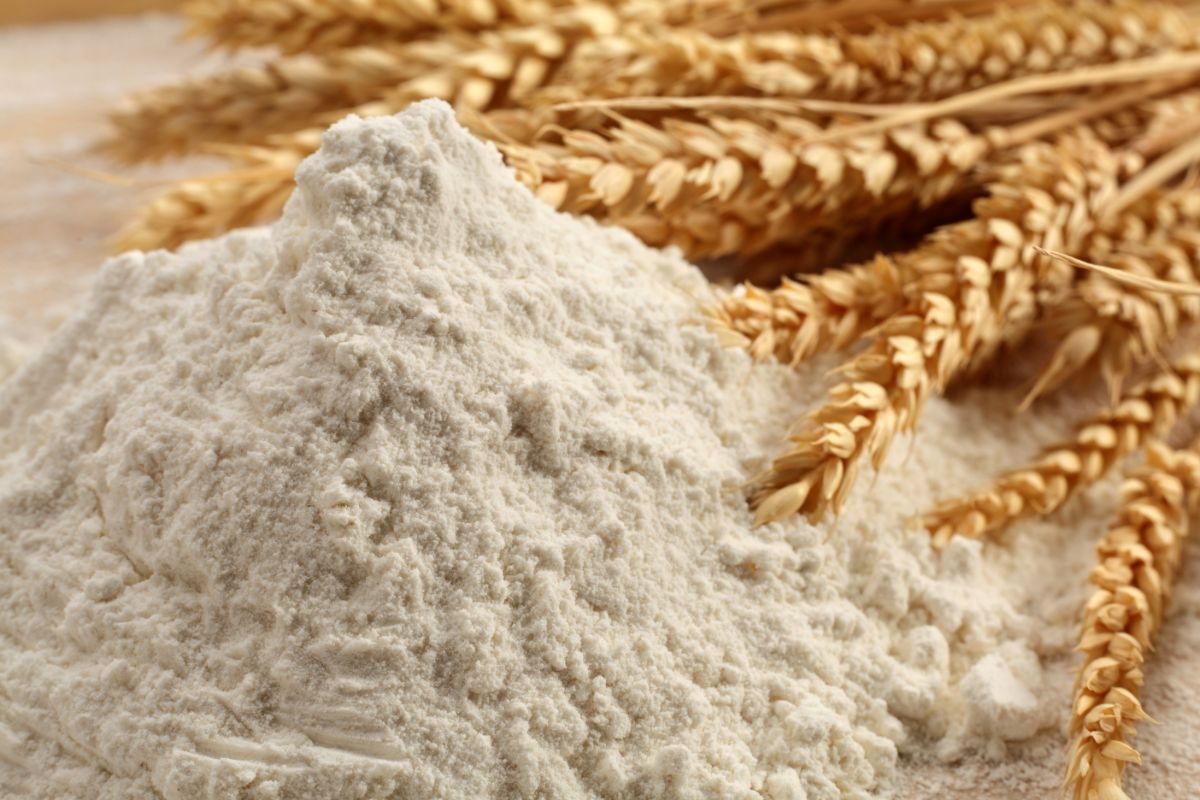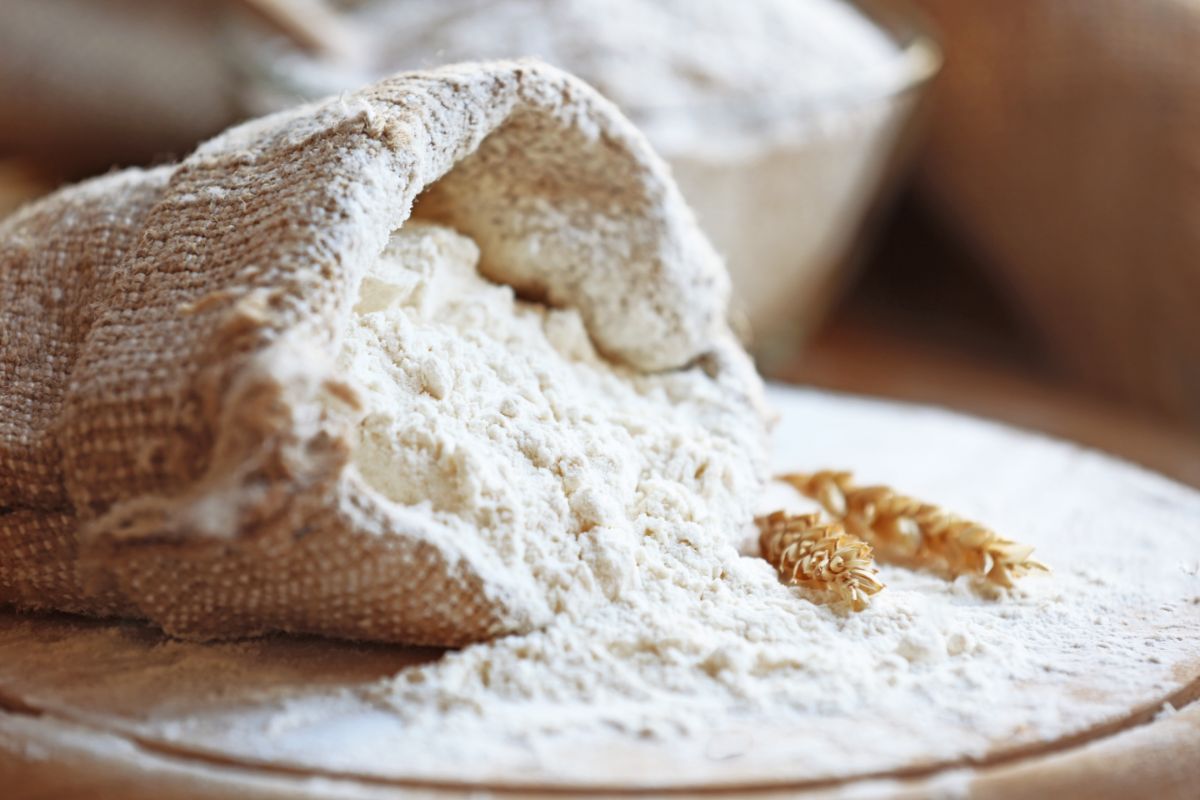For very many people, flour is just flour, without any significant differences between the available types. But is it so? Some like to use bread flour for making bread because they consider that the rate of success is higher. Others prefer using all-purpose flour because it is a generic type that can be used in more ways than bread flour.

Still, did you ever consider the flour’s health-related characteristics? Or you just stuck to its quality for baking your favorite goods?
If there are times when you have an upset stomach, not realizing why you feel this way, you should know that gluten may be responsible for your state.
You don’t have to suffer from gluten intolerance to endure stomach aches and discomfort. But before you draw any conclusion, let us take a closer look at the ways both types of flour can influence our health.
How is bread flour different from all-purpose flour?
Well, the name of these two types of flour can give you a good clue about the differences that exist between them, yet there are other particularities you should consider.
As you can tell, all-purpose flour was made to be used for a higher number of recipes. It doesn’t matter if you’re in the mood for cookies or bread when you have all-purpose flour around because you can make whatever you desire with it.
This type of flour has some protein in it, but the amount of protein you will find in all-purpose flour is lower than in the case of bread flour. So yes, bread flour has a higher amount of protein, than gluten.
Still, if you want the best results, all-purpose flour may not deliver them, when looking to bake bread or cakes, according to your preferences.
Even a small amount of protein will give this flour a certain degree of firmness. But if you are sensitive to details you will make the difference between using all-purpose flour and bread flour when making bread.
However, if you like baking a variety of recipes, having a special type of flour for each of them can turn into a storage issue. So, having all-purpose flour around will be a more practical choice.
Bread flour, on the other hand, was specially created to give top results when baking goods, in particular, bread.
When this flour is paired with high-quality yeast, it should give you the bread you dream about. The content of protein in this type of flour is higher and, therefore, the level of gluten is higher as well.
A higher protein level in the flour will mean that your bread dough will be able to absorb more water and develop upward during its rise, instead of developing on the sides.
Also, due to the high content of gluten, dough made with bread flour will be more elastic and easier to shape.
How can high-gluten flour be healthier than low-gluten flour?

Gluten is something that naturally occurs in wheat flour, so it is a natural compound and not something that is added to the flour.
An interesting fact is that gluten is mainly made out of protein, anywhere between 70 to 80%, and we all know just how useful protein is for our bodies.
We need protein to repair and grow cells of all kinds, so it is important to get the right amount of protein from our food. So, considering that high-gluten flour is also high in protein, it is easy to see why such flour is better for our health.
Of course, those that have issues with gluten won’t be able to agree to this. But, gluten intolerance or irritable bowel syndrome are exceptions to this rule, as they are health conditions.
A healthy body will not have issues processing gluten and taking what’s needed from it. This is why we need bread in our diets.
The higher the quality of the bread we consume, the better it will be for us. So, if possible, it would be ideal if you could prepare bread at home.
You will have the possibility to use only the best kind of ingredients and boost the nutritional value of the bread you consume daily.
Getting into more details, a cup of bread flour that has gluten content ranging between 11 and 12%, usually has more than 16g of protein.
In comparison to this, all-purpose flour, which has a lower content of gluten, will deliver only 12g of protein per cup, on average.
According to the recommendation of the Centers for Disease Control and Prevention, a person should consume between 46 and 56g of protein on a daily basis, in order to maintain a healthy body. So, we could say that we should choose the flour according to our diet and daily menu.
If you consume foods that are reliable sources of proteins, maybe you don’t need flour that is also high in protein. But, if you’re not too keen on proteins, you may need a supplement in this sector and high-gluten flour is just what you need.
It is a matter of perspective
Whether bread flour is healthier than all-purpose flour is, in the end, a matter of perspective and personal needs.
If you don’t get into trouble when consuming gluten, you may appreciate the way bread flour behaves when preparing bread dough and the fact that it contributes to your protein intake.
From a nutritional point of view, bread flour is healthier than all-purpose flour and it also helps you enjoy better results when baking your bread.
Hopefully, now you know how to differentiate one type of flour from the other and make the best choice in your case.
Making bread at home can be very rewarding in terms of freshness and available nutrients. There’s nothing better than food in which you know every single ingredient that contributed to its creation.
And when using top-quality ingredients, it is impossible not to get the best results. It may take a while to master the art of making bread, but it is definitely worth the effort.
